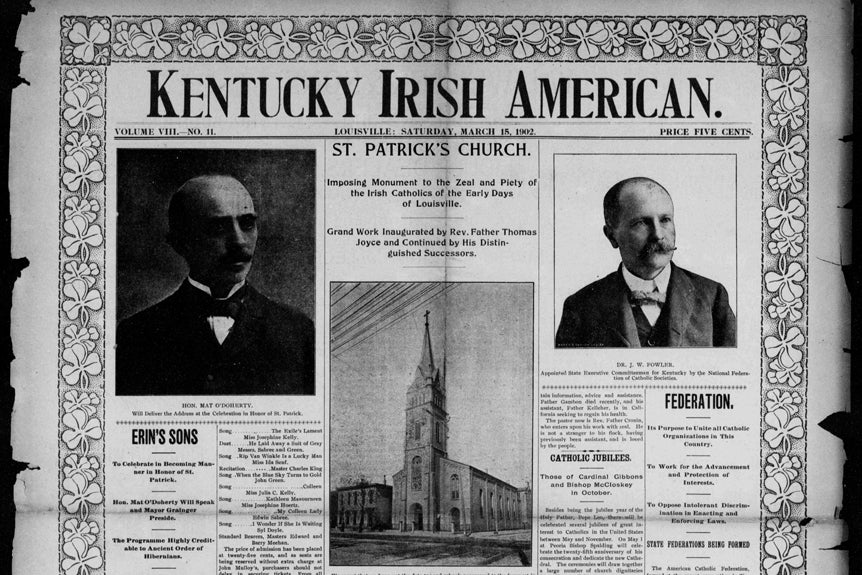Why Louisville is the epicenter of St. Paddy's Day celebrations in Kentucky.
Kentucky and St. Patrick's Day go together like Lucky Charms and Jameson – not very well. But, like an old drunk at breakfast, that hasn't stopped us from trying.
There's actually a fair amount of Irish influence in Kentucky. There's a ton in Appalachia, for example, in the dialect especially. But this is mainly due to first-wave Irish immigrants of the 18th century, and they were mostly Protestants. Protestants don't cotton to Patrick or any other saint. Plus they suck at throwing parades. Everyone knows that.
It wasn't until the Potato Famine of the 1840s that the Irish Catholics started showing up in large numbers in Kentucky. They, however, tended to gravitate toward larger port cities, where there were plenty of new industrial jobs to be had. Louisville is one such city.
In fact, Irish employees of the L&N Railroad settled so densely near the original freight yard south of downtown that the area became known as Limerick, after the Irish county of the same name. Most lived in modest shotgun houses, while the more affluent – the so-called "lace curtain Irish" – built impressive homes on St. Catherine Street. The crown jewel of the neighborhood was (and is) the St. Louis Bertrand Catholic Church. Built in the English Gothic style, it was dedicated in 1873.

Not coincidentally, it was also around this time that Louisville's annual St. Patrick's Day parade began. Its route began at St. Louis Bertrand and ended on Broadway.
The neighborhood even had its own newsweekly, Kentucky Irish American, which chronicled the festivities during its heyday. According to all reports, there was singing, dancing, traditional Irish music, speeches, plays and, of course, drinking. Ads in the paper even let readers know what local brews would be on tap and where. The good time didn't last long, however.
In 1902, the L&N Railroad moved headquarters to the Highland Park District, and most of Limerick's residents followed. The neighborhood hosted its last St. Patrick's Day parade in 1918, and Louisville wouldn't see another until more than 50 years later.
Although the decades that followed saw a steady dissemination of Irish descendants and influence in Kentucky and across America, Louisville remained a stronghold of Irish culture in the state. The Ancient Order of Hibernians – the Irish fraternity formed to guard churches against anti-Catholic forces like the infamous Know Nothings, and the group largely responsible for organizing St. Patrick's Day festivities in the city – once had seven chapters in Louisville. The last one folded in 1944.

The Hibernians returned in 1966, however, and, in the 1970s, with the help of newly elected Mayor Harvey Sloane, resurrected the St. Patrick's Day parade. The tradition continues today – this year's parade, held last Saturday, celebrated "100 Years of Irish Rising" – and draws more than 100,000 people to the Highlands each year to put on plastic bowler hats, pretend to like Guinness and blast The Departed soundtrack until somebody pukes.
Hoorah!


